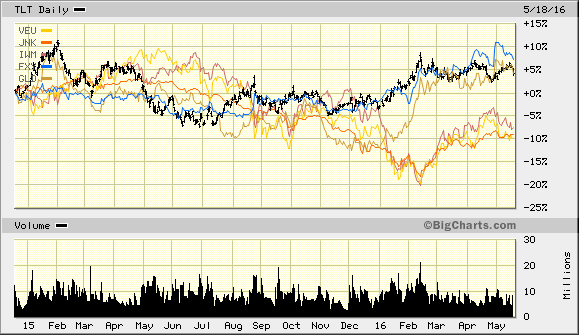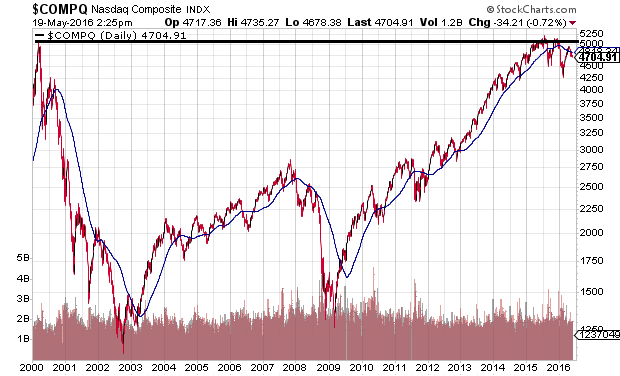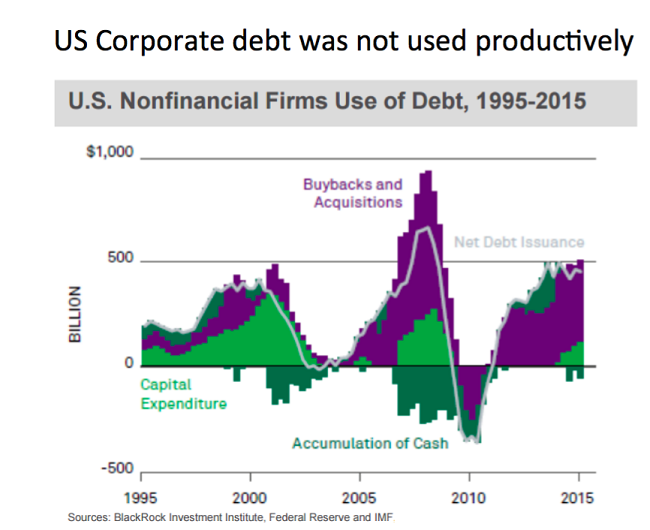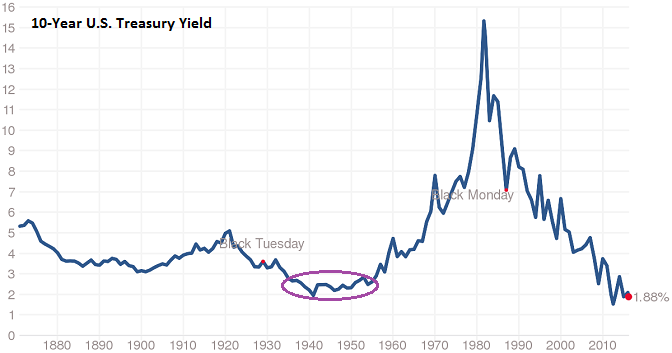Some investors have come to believe that ultra-low interest rates alone have made traditional valuations obsolete. The irony of the error in judgment? Experts and analysts made similar claims prior to the NASDAQ collapse in 2000. (Only then, it was the dot-com “New Economy” that made old school valuations irrelevant.) The benchmark still trades below its nominal highs (and far below its inflation-adjusted highs) from 16 years ago.
Without question, exceptionally low borrowing costs helped drive current stock valuations to extraordinary heights. In fact, favorable borrowing terms played a beneficial role in each of the stock bull markets over the last 40-plus years, ever since the post-Volcker Federal Reserve began relying on the expansion of credit to grow the economy.
Indeed, we can even take the discussion one step further. Ultra-low interest rates had super-sized impacts on the last two bull markets in assets like stocks and real estate.
Bullishness from 2002-2007 occurred alongside household debt soaring beyond real disposable income; excessive borrowing at the household level set the stage for 40%-50% depreciation in stocks and real estate during the October 2007-March 2009 bear. Bullishness from 2009-2015 occurred alongside a doubling of corporate debt – obligations that moved away from capital expenditures toward non-productive buybacks and acquisitions. Would it be sensible to ignore the near-sighted nature of how corporations have been spending their borrowed dollars?
It is one thing to recognize that ultra-low borrowing costs helped to make riskier assets more attractive. It is quite another to determine that valuations have been rendered irrelevant altogether. For one thing, the U.S. had a low-rate environment for nearly 20 years (i.e., 1935-1954) that is very similar to the current low rate borrowing environment. The price “P” that the investment community was willing to pay for earnings “E” or revenue (sales) still plummeted in four bearish retreats. In other words, low rates did not stop bear markets from occurring in 1937-1938 (-49.1%), 1938-1939 (-23.3%), 1939-1942 (-40.4%), or 1946-1947 (-23.2%).
Economic growth was far more robust between 1936 and 1955 than it is in the present. What’s more, during those 20 years, valuations were about HALF of what they are today. If low rates alone weren’t enough to DOUBLE the “P” relative to the “E” back then, why would one assume that low rates alone right now are enough to justify exorbitant valuations in 2016? When top-line sales and bottom-line earnings are contracting? When economies around the globe are struggling?
Equally important, the inverse relationship between exorbitant valuations and longer-term future returns since 1870 has taken place when rates were low or high on an absolute level; the relationship has transpired whether rates were falling or rates were climbing. It follows that central bank attempts to aggressively stimulate economic activity and revive risk asset appetite did not prevent 50% S&P 500 losses and 75% NASDAQ losses in 2000-2002, nor did aggressive moves to lower borrowing costs prevent the financial collapse in 2008-2009.
Clearly, valuations still matter for longer-term outcomes. In all probability, in fact, fundamentals began to matter 18 months ago. Take a look at the performance of the S&P 500 SPDR Trust (NYSE:SPY) versus iShares 7-10 Year Treasury Bond (NYSE:IEF) over the 18 month period. Even with borrowing costs falling over the past year and a half – even with lower rates providing a boost to corporations, households and governments – “risk-on” stocks have underperformed “risk-off” treasuries.

It gets more interesting. The prices on riskier assets like small caps in iShares Russell 2000 (NYSE:IWM), foreign stocks in Vanguard FTSE All-World ex US (NYSE:VEU) and high yield bonds via SPDR High Yield Corporate (NYSE:JNK) have fallen even further than SPY. In complete contrast, the price of other risk-off assets – CurrencyShares Yen Trust (NYSE:FXY), iShares 20+Year Treasury (NYSE:TLT), SPDR Gold Trust (NYSE:GLD) have surged even higher than IEF.

By the way, 18 months is not arbitrary. That is the period of time since the Federal Reserve last purchased an asset (12/18/2014) as part of its balance sheet expansion known as “QE3.” Since the end of quantitative easing, then, indiscriminate risk taking has fallen by the wayside. Larger U.S. companies may have held up, though the prospect for reward has been dim. Smaller stocks, foreign stocks and higher-yielding assets have not held up particularly well; their valuations may be on their way toward mean reversion.
In the big picture, then, are you really going to get sucked in to the idea that low rates justify perpetual increases in stock prices? The evidence suggests that, until valuations become far more reasonable, upside gains will be limited. Additionally, until and unless the Federal Reserve provides more shocking and more awe-inspiring QE-like balance sheet expansion a la “QE4,” where the 10-year yield is manipulated down from the 2% level to the 1% level, low rate justification for excessive risk-taking would be misplaced.
What could the catalyst be for indiscriminate risk taking? What could spark a genuinely strong bull market uptrend? Reasonable valuations that are likely to result from a bearish cycle. Fed policy reversal might then force the 10-year yield to 1% or even 0.5%, and we could then discuss how they “justify” still higher valuations than exist in 2016. Nevertheless, unless the Fed has found methods for eliminating recessions outright and permanently inspiring credit expansion, bear markets will still ravage portfolios of the unprepared investor.



